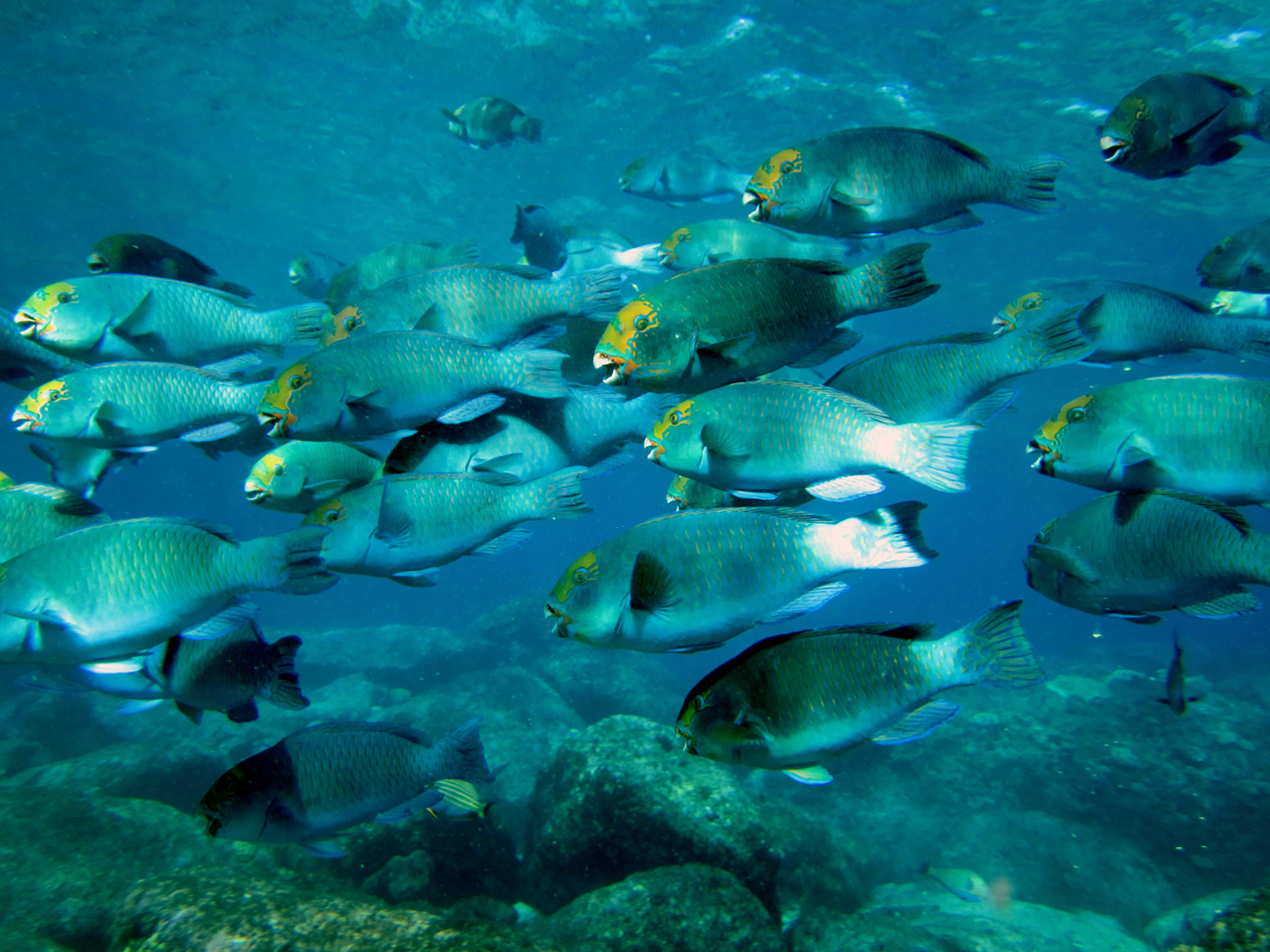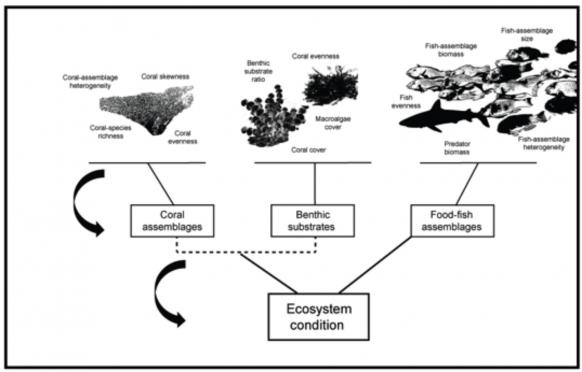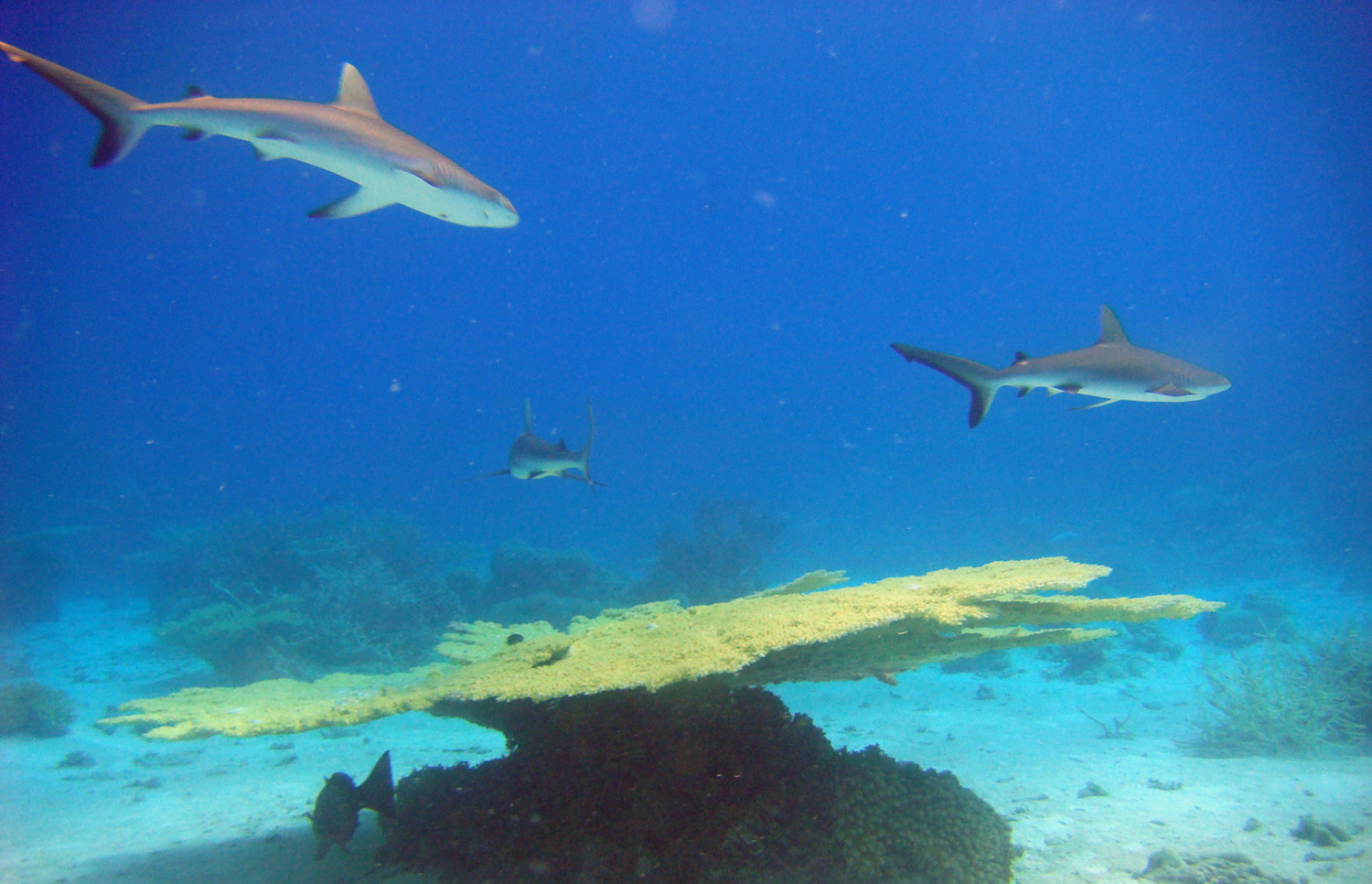Research Spotlight
The Micronesia Challenge: Sustainable Coral Reefs and Fisheries
Research Spotlight
2/7/2018
The Micronesia Challenge: Sustainable Coral Reefs and Fisheries

Striking a balance between harvesting large herbivores and predators and allowing for their functional roles in the ecosystem is a major challenge facing reefs in Micronesia.
While island societies can do little to control carbon emissions from developed nations,
they can manage their local resources to enhance the ecosystem services that coastal
habitats, including reefs, provide for people. In this spirit, the political leaders
of five nations in Micronesia initiated the Micronesia Challenge (MC) in 2006 as a
commitment to ‘effectively conserve’ at least 30% of their marine resources and 20%
of their terrestrial resources by 2020. With regards to coral reefs, the MC was established
due to growing concerns of stressors such as climate change, unsustainable harvest
of fisheries, and land-based pollution.
The tough thing about studying fishes, coral reefs and other marine ecosystems is
that they are constantly moving and changing in response to natural variation, episodic
disturbances, and human stressors. So how can scientists help managers measure the
effectiveness of marine conservation efforts? This is the question new research in
Micronesia is helping to answer led by the University of Guam Marine Laboratory (UOGML).
The new paper published in the academic journal PLOS ONE describes a way to measure
coral-reef ecosystem condition, and predict the relative influence of key threats
to coral reefs. “Perhaps the greatest challenge for the team of scientists from Yap
to the Marshall Islands was establishing a ‘scorecard’ indicative of the fish, corals,
and benthic substrates that all depend upon each other,” described Dr. Peter Houk
(UOGML), the lead author of the study. “This was accomplished by using individual
condition metrics, similar to our blood pressure and cholesterol, which combine to
determine our health.” Armed with this approach, the researchers evaluated the current
health of 78 reefs across 8 islands in Micronesia.
The results were a bit daunting, revealing that only 42 percent of the major reef
habitats across Micronesia exceeded the thresholds established for the Micronesia
Challenge. “Understanding current health was a key component of this research, but
we also needed to evaluate why reefs in some localities were not as healthy as others.
More specifically, we needed to understand if coral-reef status was due to natural
environments or human stressors because we can only manage human stressors,” described
Trina Leberer from The Nature Conservancy and co-author of the study.  Figure shows the process by which individual measures of coral and fish communities
were combined to assess overall ecosystem condition.
Figure shows the process by which individual measures of coral and fish communities
were combined to assess overall ecosystem condition.
For several islands with low human populations, such as Rota in the Mariana Islands
and Namdrik Atoll in the Marshall Islands, wave energy alone was the best predictor
of coral-reef condition, and so reefs were considered to be more-or-less in a natural
state, and healthy. However, for the majority of islands with larger human populations,
fishing pressure acting alone on the outer reefs, or in combination with pollution
in some lagoons, was the best predictor of more than 50 percent of the reefs examined.
“These results highlighted the ecological roles that healthy fisheries contribute
to overall ecosystem function. When examined deeper, we found that the absence of
predators and large herbivores on reefs was the strongest factor leading to the dominance
of algae cover. Both have key functional roles that are threatened,” described Houk.
Also interesting was the finding that the majority of marine protected areas across
Micronesia are not currently living up to their full potential. This could be due
to poor placement and natural factors, but was more likely a consequence of insufficient
enforcement given that the fewer successful MPA’s were associated with dedicated community-based
enforcement.
“We have to start thinking outside the box and managing fisheries from many approaches,
not just no-take marine protected areas,” suggested Eugene Joseph, executive director
of the Conservation Society of Pohnpei and co-author. “Networks of scientists, community
members, and the fishing community have begun coming together in Pohnpei and have
together decided on new legislation that limits the harvesting and sizes of key predators
and large herbivores. This legislation recently passed and is now a law. Enforcement
and compliance is now the remaining issue we’re dealing with, and outreach to communities
is a big part of that. Such practices of limiting our catches of certain species
and size classes were common practices of traditional cultures.”
The results of the current study have pinpointed reefs that are not doing well, evaluated
which stressors are most likely responsible, and finished by determining what aspects
of the fish communities are most threatened. This represents a key step towards promoting
healthy reefs and ecosystem services such as fisheries that they provide. Next steps
include completing the assessment in Palau in coordination with the Palau International
Coral Reef Research Center, and exploring interest in the possibility of conducting
this type of assessment for Guam.
“Fishing is and will always be a cornerstone for societies and livelihoods in Micronesia.
This requires that we have dedicated science-to-management frameworks in place to
efficiently evaluate management, and help adapt policies when necessary,” concluded
Houk. Specific details about progress in each jurisdiction can be found in the freely-available
online report.
( http://journals.plos.org/plosone/article?id=10.1371/journal.pone.0130823 )
The authors thank the Micronesia Conservation Trust, the National Oceanic and Atmospheric
Administration’s Coral Reef Conservation Program, and the David and Lucille Packard
Foundation for supporting the collective efforts.

